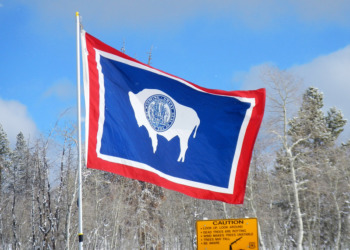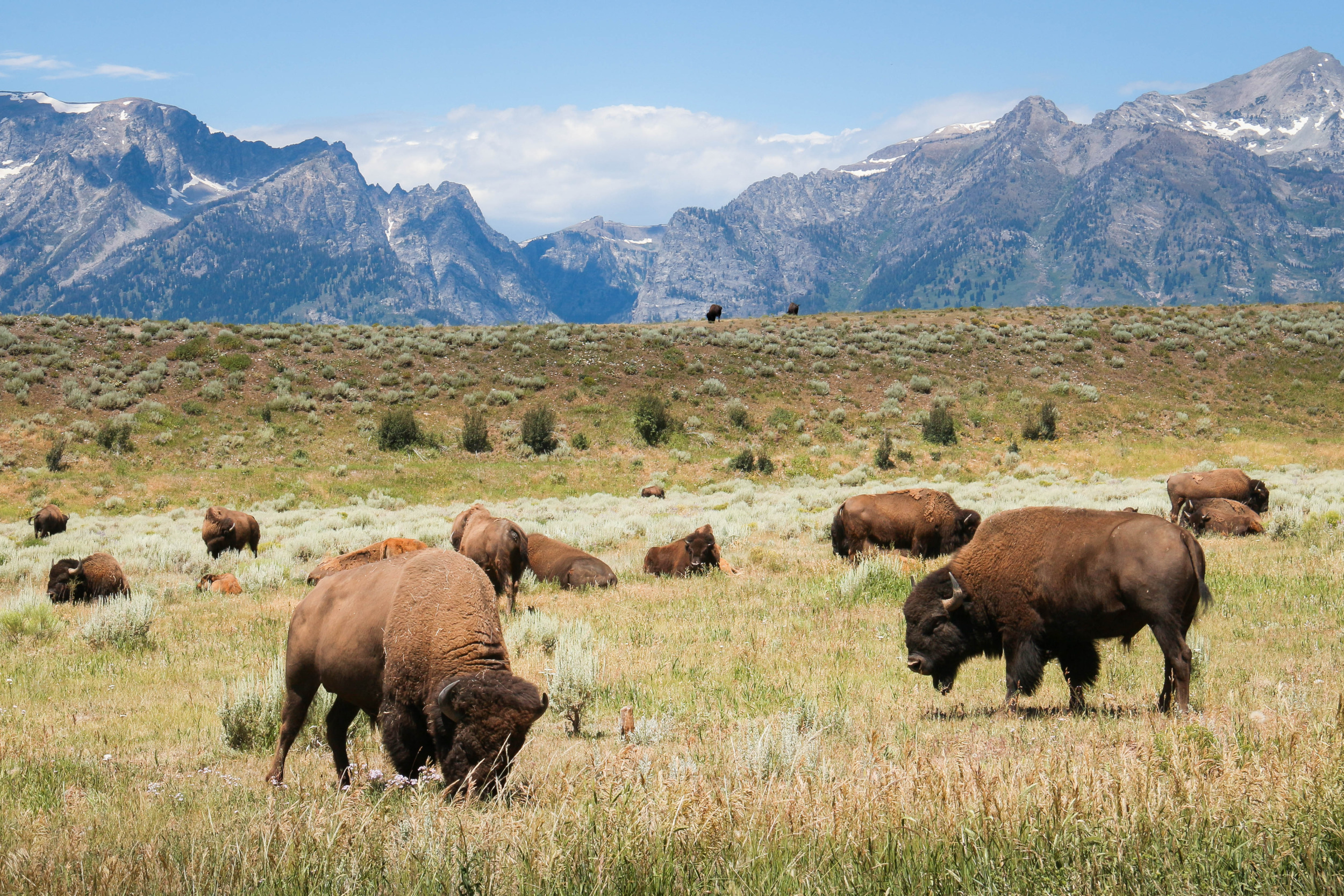Viewing a bison herd from a respectful distance while learning how the Shoshone people used every part of the animal for sustenance and turning a felled tree into a tipi lodgepole are just a few ways students at Fort Washakie’s schools are meeting the state’s Indian Education for All standards.
Until recently, it was possible to graduate from a Wyoming high school and not be aware that the state is home to two distinct sovereign nations—the Eastern Shoshone and the Northern Arapaho.
In 2017, the Wyoming legislature passed the Indian Education for All Act, instructing schools to educate students on the “cultural heritage, history and contemporary contributions of American Indians.” The class of 2022 was the first to leave high school with the new standards, part of the Wyoming social studies curriculum, as a graduation requirement.
The State Board of Education (SBE) worked to create the new standards in 2018, and school districts had until last year to implement them.
Outgoing SBE chairman Ryan Fuhrman supported Indian Education for All when he was a board member. “As I said at the time, I grew up in Wyoming and went to Wyoming schools, and it took me being an adult to know that there were two different sovereign tribes sharing a reservation,” Fuhrman told the Wyoming Truth.
Members of several tribes and other stakeholders reviewed and updated Wyoming’s social studies standards to align with the legislation. In some cases, they simply added the phrase “tribes,” while in others, they introduced new standards.
For example, one fifth grade standard previously required students to understand “basic local, state and national political processes (e.g., campaigning and voting).” Now that standard reads “local, tribal, state, and national political processes.”
In a more specific update, a previous standard required fifth graders to “Understand the purposes of the three branches of government.” Now they also must “Understand how the Northern Arapaho and Eastern Shoshone are sovereign nations with their own systems of governance (i.e., each has a General Council and a resolution form of government).”
Each district has autonomy in how it relays the information. The Wyoming Department of Education (WDE) provides resources for teachers on its website, as well as hosts workshops and an annual Native American Education Conference.
“Lesson plans and curricula are the responsibility of school districts under the doctrine of local control, but the WDE has invited tribal members, scholars and educators from the Wind River Indian Reservation and other Native communities to participate in the aforementioned workshops and the Native American Education Conference,” Rob Black, WDE Native American liaison, said in a statement to the Wyoming Truth.
“Likewise, the Wyoming-specific materials listed at the top of the WDE Indian Education resources webpage were co-authored and/or vetted by members of both the Eastern Shoshone and Northern Arapaho nations,” he added, noting that 14 of the 24 members of the standards review committee are Native Americans.
Making a difference
Stefany Anderson, a literacy coach for Cody Middle and Cody High School who helped update the standards, said her district implemented them before the mandate took effect and taught Native history as part of American history.

Dana Orlosky/Flicker
Wyoming state flag
A former social studies teacher, Anderson previously taught a Native American Studies elective class. Her students each chose a project that taught them how to be an ally to Indigenous people—from encouraging folks to buy art from Native artisans instead of cheap fakes to teaching their peers to shun video games that portray Native people in inhumane or negative ways.
Anderson also took students to Fort Washakie Schools’ Buffalo Days, hosted by the Wind River Tribal Buffalo Initiative, where they learned about the reintroduction of buffalo into the life and diet of the Wyoming tribes.
“The kids were really impressed with that,” she recalled. “When we hear about the significance [of buffalo to Native Americans], it becomes something we really care about. The kids really took that seriously.”
Buffalo Bill Center offers resources to educators
Staff at the Buffalo Bill Center for the West in Cody, which houses the Plains Indian Museum, are an access point for reliable and accurate content. When the new education standards came online, they offered resources for educators and virtual programs for students in grades K-12.
“My job is to connect teachers in Wyoming with content and also make connections—make bridges—with Indigenous knowledge keepers,” said Heather Bender, the center’s Native education outreach specialist. “One of the challenges across the state is there isn’t one good centralized place for all the information, so we’re one access point.”
The center’s online professional development classes allow educators to learn from members of the Native American community and earn Wyoming Professional Teaching Standards Board and University of Wyoming credit.
Lynette St. Clair, the Indian education coordinator at Fort Washakie School District on the Wind River Reservation, is proud that her district took the lead in securing passage of the Indian Education for All legislation and provided resources for other school districts. Now she hopes the state will offer more professional development opportunities.
“I think the reservation school districts have really taken the burden of creating resources and creating lesson plans and really getting schools to address these needs,” said St. Clair, a member of the Shoshone tribe. “At some point, the state has to be able to provide these ongoing needs, because it’s critical. If we want to do a really good job at it, then they have to be willing to meet us halfway.”
St. Clair noted that her school has tapped Wyoming Humanities and Wyoming PBS for Indian education projects.
As for St. Clair herself, she teaches about the historical contributions of the Wyoming tribes and the contemporary life of Native Americans at schools and education conferences.
“We’re a nation within a nation; we have a very unique governmental relationship,” she said. “Those are things that not only do our students here on the reservation need to understand but also students throughout the state of Wyoming—as well as educators.”






























